
Browse an alphabetical list of photographs. These historical images portray people, places, and events before, during, and after World War II and the Holocaust.
<< Previous | Displaying results 101-125 of 134 for "Photo" | Next >>
A group of Romani (Gypsy) prisoners in Belzec labor camp, 1940. The Belzec labor camp and its subsidiaries were dismantled at the end of 1940.
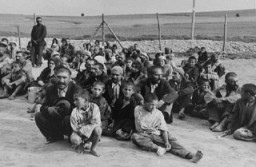
Romani (Gypsy) prisoners line up for roll call in the Dachau concentration camp. Germany, June 20, 1938.
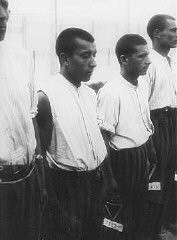
Romani (Gypsy) survivors in a barracks of the Bergen-Belsen concentration camp during liberation. Germany, after April 15, 1945.
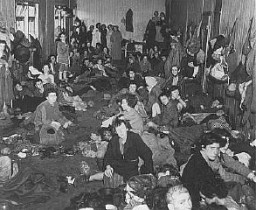
A Romani (Gypsy) victim of Nazi medical experiments to make seawater safe to drink. Dachau concentration camp, Germany, 1944.

A Romani (Gypsy) victim of Nazi medical experiments to make seawater safe to drink. Dachau concentration camp, Germany, 1944.
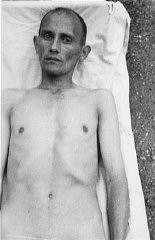
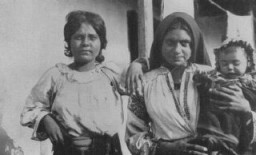
Romani (Gypsy) women and children interned in the Rivesaltes transit camp. France, spring 1942.
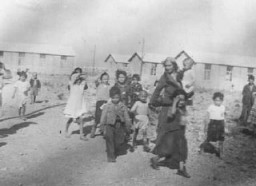
Romani (Gypsy) women march to work in the Lackenbach internment camp. Lackenbach, Austria, 1940-1941.
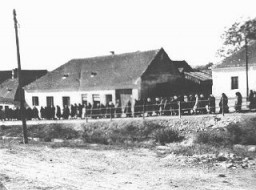
In Hitler's presence, Romanian ruler Ion Antonescu signs the Three-Power Agreement. Berlin, Germany, November 23, 1940.
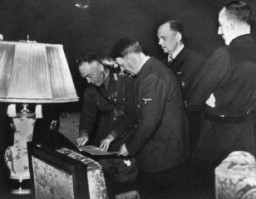
Horia Sima, leader of the Iron Guard and deputy prime minister of the Romanian government in 1940. Bucharest, Romania, 1940. In this image, Horia Sima salutes his supporters during a ceremony commemorating the deaths of Ion Mota and Vasile Marin, Iron Guardsmen who were killed in the Spanish Civil War.
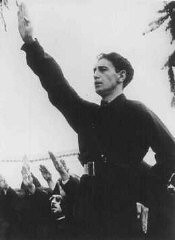

German police round up Jews in the Jewish quarter of Amsterdam, blockaded following anti-Nazi violence. Amsterdam, the Netherlands, February 22, 1941.
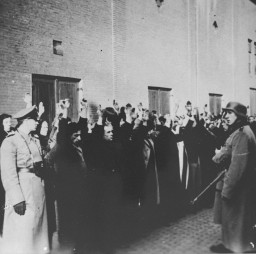
Austrian police round up Romani (Gypsy) families from Vienna for deportation to Poland. Austria, September-December 1939.
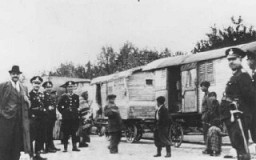
After the first roundup in Paris, French police escort foreign Jewish men from the Japy school to deportation trains at the Austerlitz station. Paris, France, May 14, 1941.
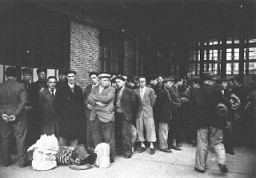
Jews captured during the Warsaw ghetto uprising are marched past the St. Zofia hospital down Nowolipie Street towards the Umschlagplatz for deportation.
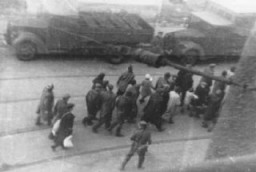
Jews rounded up during the Warsaw ghetto uprising are forced to march to the assembly point for deportation. Warsaw, Poland, April or May 1943.
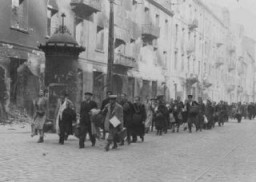
Lithuanian militiamen in Kovno round up Jewish women. Kovno, Lithuania, June-July, 1941.
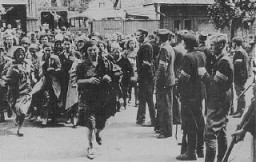
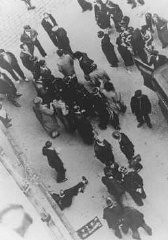
Roundup of the Jews of Lubny, shortly before they were massacred by Einsatzgruppe detachments. This photo, originally in color, was part of a series taken by a German military photographer. Copies from this collection were later used as evidence in war crimes trials. Lubny, Soviet Union, October 16, 1941.
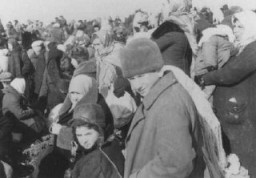
Rufus Jones (seated) and Clarence Pickett were chairman and executive secretary of the American Friends Service Committee (AFSC), respectively. They are pictured here at a Quaker meeting in Philadelphia. The AFSC assisted Jewish and Christian European refugees. Philadelphia, United States, January 22, 1943.
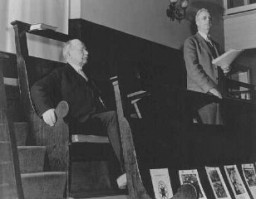
Ruins in Oradour-sur-Glane, France. The town was destroyed by the SS on June 10, 1944. Photograph taken in September 1944.

Ruins of a building in the Kovno ghetto gutted when the Germans attempted to force Jews out of hiding during the final destruction of the ghetto. Photographed by George Kadish. Kovno, Lithuania, August 1944.
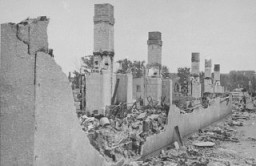
View of the entrance to a marketplace reduced to rubble as a result of a German aerial attack. Warsaw, Poland, September 1939.
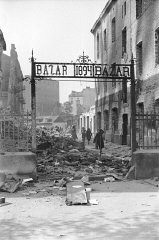
A Polish town lies in ruins following the German invasion of Poland, which began on September 1, 1939.
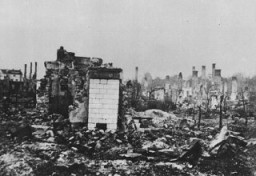
A Polish town in ruins after six years of war and German occupation. Poland, 1945.
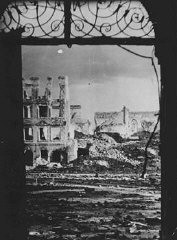
We would like to thank Crown Family Philanthropies, Abe and Ida Cooper Foundation, the Claims Conference, EVZ, and BMF for supporting the ongoing work to create content and resources for the Holocaust Encyclopedia. View the list of donor acknowledgement.